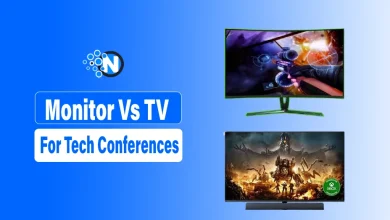The Rise of Gamification in Modern Engagement
Gaming has always been a fun activity whether you’re a kid or a fully grown adult. As technology is evolving day by day, games are becoming more than just entertainment. They also developed opportunities to provide study and learning objectives.
The online gaming industry is one of the most prominent examples of the effects of gamification where casinos offer exclusive bonus deals and rewards to attract players.
Games are making different sectors more engaging by grabbing people’s attention and focus. In this article, I am going to discuss it all in detail.
The Mechanics of Gamification
There are some key elements of gamification, such as points, badges, leaderboards, and rewards. Further, these components are designed to mimic the motivational factors found in games, encouraging users to participate actively and achieve specific gaming goals. Here are the details of such elements:
- Points serve as a measure of progress, providing immediate feedback and a sense of accomplishment to players for an engaging experience.
- Badges act as symbols of achievement, often used to recognize milestones or expertise.
- Leaderboards introduce a competitive element, allowing users to compare their performance with others.
- Rewards offer incentives for reaching certain objectives, whether tangible or intangible.

The Impact of Mechanism of Gamification
These mechanics are deeply rooted in psychological principles, particularly motivation and competition. Gamification taps into cohesive encouragement by fulfilling basic human desires for achievement, recognition, and social interaction.
It also uses extrinsic motivation through rewards and incentives, driving players to engage with the platform more frequently. The competitive nature of leaderboards and challenges appeals to users’ desire for status and social comparison to enhance engagement.
The application of these elements is not limited to digital platforms; they can be integrated into various aspects of life, from education to fitness. By understanding the underlying mechanics of gamification, organizations can create more engaging and interactive experiences for their users, ultimately driving desired behaviors and outcomes.
The Ultimate Rise of Gamification in Different Sectors
Here, I have compiled different analyses of the rise of gamification in different sectors:
Gamification in Education for Students
The education sector has embraced gamification as a means to enhance learning experiences and improve student engagement. Studies, such as those conducted by TalentLMS, have shown that gamification can significantly increase retention rates and motivation among students.
Platforms for students like Duolingo and Kahoot! showcase the successful integration of gamification in the education sector. Duolingo uses a point system, streaks, and rewards to encourage language learners to practice the games consistently.
Kahoot! transforms traditional quizzes into competitive games, promoting a fun and engaging atmosphere for students. These platforms demonstrate how gamification can enhance the learning process, making it more enjoyable and effective.
Impact of Gamification on Education
The impact of gamification in education extends beyond just increased engagement. It also promotes skill development, critical thinking, and collaboration among students.
Gamification helps students retain information better and apply their knowledge in real-world scenarios by creating a more dynamic and interactive learning experience.
As educational institutions continue to explore the potential of gamification, its role in shaping the future of learning becomes increasingly significant.
Gamification in the Corporate Sector
Businesses and organizations are increasingly incorporating gamification into their operations to boost employee engagement and productivity. According to research by Gartner, gamified applications are becoming prevalent in corporate environments, with companies using game-design elements to motivate employees and drive performance.
Badgeville, a leader in enterprise gamification, has revealed the effectiveness of these strategies in various industries. Companies can create a more engaging work environment. This also encourages employees to achieve their goals and collaborate effectively, by implementing gamification.
Elements such as points, badges, and leaderboards are used to recognize achievements and foster a sense of competition, ultimately leading to increased productivity and job satisfaction.
Impact of Gamification on the Corporate Sector
Successful implementations of gamification can be seen in companies like Salesforce and Microsoft. Salesforce uses gamification to motivate its sales teams, rewarding them for reaching targets and closing deals.
Microsoft has integrated gamification into its training programs, using badges and leaderboards to encourage employees to complete courses and develop new skills. As more businesses recognize the benefits of gamification, its adoption in corporate settings is expected to grow.
The Future of Gamification: Trends and Predictions
As gamification continues to gain traction across various sectors, its prospects are promising.
Market trends and projections of the rise of gamification, such as those from Grand View Research, indicate that the gamification market is expected to grow significantly in the coming years.
This growth is driven by the increasing demand for engaging user experiences and the widespread adoption of digital platforms.
Trends of Gamification
Emerging technologies and innovations, such as virtual reality (VR) and augmented reality (AR), are expected to play a significant role in the evolution of gamification.
These technologies offer new possibilities for creating immersive and interactive experiences, further enhancing user engagement.
As VR and AR become more accessible, their integration into gamified applications is likely to become more common.
Predictions of Success
The rise of artificial intelligence (AI) and machine learning presents new opportunities for personalized gamification experiences.
AI can tailor gamified elements to individual preferences and behaviors by analyzing user data, creating a more customized and engaging experience.
As these technologies continue to evolve, the potential for gamification to transform user interactions across various sectors becomes increasingly evident.
Boost Engagement: The Gamification Revolution
The transformative impact of gamification on user engagement is undeniable. By incorporating game-design elements into various aspects of life, organizations can create more interactive and engaging experiences for their audiences.
From education to corporate environments, gamification has proven to be a powerful tool for motivating users and driving desired behaviors. As we have explored throughout this article, the mechanics of gamification are deeply rooted in psychological principles, appealing to both intrinsic and extrinsic motivations.
The application of these elements has led to increased engagement, skill development, and productivity across various sectors. As gamification continues to evolve and integrate with emerging technologies, its role in shaping user experiences will only become more significant
Whether in education, business, or entertainment, gamification offers new possibilities for creating dynamic and interactive environments. As we move forward, it is essential to consider how gamification might influence our own experiences with digital platforms, redefining the way we engage with the world around us.
Conclusion
The rise of gamification is helping improve engagement in different sectors. Whether you’re related to the business or education sector, gamified approaches will help you out and perform better. It influences people to grow and helps them learn and be more productive.
As technology advances in the upcoming years, new things like AI and VR/AR will be introduced in a better way in the gaming industry. It will make gamification more exciting and personalized.




